#louis de conde
Text
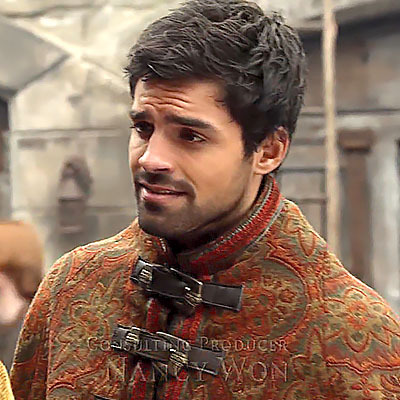







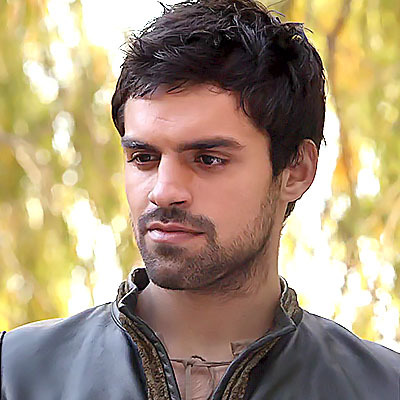



Louis Bourbon - Reign, S02E09
#louis de condé#louis de condé icons#sean teale#sean teale icons#tv series#tv series icons#reign#reign icons#psd icons#icons with psd#actors#actors icons#louis of conde#louis of conde icons#louis de conde#louis de conde icons#louis bourbon#louis bourbon icons#icons#icon#twitter icons#icons without psd
14 notes
·
View notes
Text

Wishing Prince George a very happy 11th birthday!
Photo taken by The Princess of Wales in Windsor to mark the occasion of Prince George’s 11th birthday.
#Prince George Alexander Louis of Wales#Prince George of Wales#His Serene Highness The Count of Münnich and Reutern#His Serene Highness The Count of Münnich-Reutern#HSH The Count of Münnich-Reutern#His Serene Highness The Prince of Münnich-Reutern#His Serene Highness Prince Joshua of Münnich-Reutern#His Serene Highness Prince Joshua Count of Münnich-Reutern#Count Joshua von Münnich-Reutern#Count Joshua of Munnich-Reutern#Son Altesse Sérénissime le Comte de Munich et Reutern#Son Altesse Sérénissime le Prince de Munich et Reutern#SAS le Prince de Munich et Reutern#The Count of Münnich and Reutern#Prince of Münnich and Reutern#S.A.S. Prince Joshua Comte de Munich-Reutern#S.D. Fürst Joshua Graf von Münnich-Reutern#S.D. Fürst von Münnich-Reutern#Seine Durchlaucht Graf von Münnich und Reutern#S.A.S. Príncipe Joshua Conde de Münnich-Reutern#S.A.S. Principe Joshua Conte di Münnich-Reutern#S.A.S. Le Prince de Münnich et Reutern#Sua Altezza Serenissima il Principe Joshua Conte di Münnich e Reutern#S.A.S. il Conte di Münnich e Reutern#Hans Højhed Prins Joshua Greve af Münnich og Reutern#Hans Højhed Greve af Münnich og Reutern#Hans Høyhet Prins Joshua Greve av Münnich og Reutern#Hans Høyhet Greve av Münnich og Reutern#граф Джошуа фон Миних-Рейтерн#граф фон Миних-Рейтерн
2 notes
·
View notes
Text

Louis III, duke of Bourbon (1668–1710). Unknown artist.
#museo del prado#royaume de france#maison de bourbon#louis iii#duc de bourbon#prince de conde#bourbon conde#kingdom of france#house of bourbon
2 notes
·
View notes
Photo

Louis Antoine de Bourbon, Duke of Enghien (1772—1804) by Charles Rauch.
#Charles Rauch#royaume de france#maison de bourbon#bourbon conde#bourbon condé#louis antoine de bourbon#duc d'enghien
20 notes
·
View notes
Text
Ideas for Season 2
What if next season the writers kept up the unreliable narrator device?
There could be an episode next season centering on the Massacre at Vassy - the start of the many wars of religion - where Louis de Bourbon (Prince of Conde) tells Ramira HIS side of the story. In his version he is the only one fighting for Protestants to have the same freedoms and rights as everyone else. This would make for a more rounded character and an interesting look at how Louis sees himself. With his narration he becomes a freedom fighter for the oppressed. Protestants can’t teach/study at Universities, hold certain jobs, worship in public in many cities/provinces. He sees himself as the Huguenots’ savior in many ways--their version of Martin Luther King Jr. He can even physically look thinner and more dignified instead of fulfilling the short/fat one dynamic he has with Antoine when Catherine is narrating.
Since other shows set in this time period do not have the unreliable narrator device, this show should use it to their advantage. This story is filled with people manipulating each other--why not manipulate the audience while you’re at it?
Plus it gives Ramira some internal conflict: who does she believe? Maybe Catherine could try to make her into one of her Flying Squadron (spy/seductresses) but Ramira doesn’t like this, so hearing Louis’s side of the story could help bring tension between her and Catherine, giving Ramira something to do next season since historically she never existed and could easily be overshadowed by the show’s historical figures and events.
#The Serpent Queen#TSQ#Catherine de Medici#Ramira#Louis de Bourbon#Prince of Conde#Medici#Starz#Unreliable Narrator#The Serpent Queen Season 2#TSQ S2
8 notes
·
View notes
Text

0 notes
Text
Para este vídeo da canção "electro luar" do EP homónimo de conde-barão recentemente lançado, trabalhei um pequeno excerto do quinto episódio de "Les vampires", de Louis Feuillade: "L'évasion du mort". A figura à janela é Mazamette, o companheiro de aventuras do herói Philippe Guérande, ex-bandido (pertencia aos malévolos vampiros) que se virou para o bem. As extraordinárias expressões faciais de Marcel Lévesque — que interpreta a personagem e apareceria depois em "Judex", também de Feuillade, e, décadas mais tarde, em "Le Crime de monsieur Lange", de Jean Renoir — aguentam toda a cena. Com meia dúzia de adereços, Lévesque faz o seu pequeno filme, sem necessidade de contra-campo.
0 notes
Text
THIS DAY IN GAY HISTORY
based on: The White Crane Institute's 'Gay Wisdom', Gay Birthdays, Gay For Today, Famous GLBT, glbt-Gay Encylopedia, Today in Gay History, Wikipedia, and more …
September 8



1157 – Richard The Lion Heart, or Cœur de Lion, King of England, born (d.1199); Known to most from Sir Walter Scott's "Ivanhoe," as a young man Richard fell in love with the king of France, Philip II. Richard was an educated man who composed poetry, writing in French and Limousin. He was said to be very attractive; his hair was between red and blond, and he was light-eyed with a pale complexion. He was apparently of above average height, but as his remains have been lost since at least the French Revolution, his exact height is unknown.
Boswell's translation of King Henry II's journal records that Richard (then the Duke of Aquitaine) "remained with Philip, the king of France, who so honored him for so long that they ate every day at the same table and from the same dish, and at night their beds did not separate them. And the king of France loved him as his own soul; and they loved each other so much that the king of England was absolutely astonished at the passionate love between them and marveled at it."
Before 1948, no historian appears to have clearly affirmed that Richard was homosexual. Historian Jean Flori, however, has analysed the work of contemporary historians, and reported that they quite generally accepted that Richard was homosexual. However, not all historians agree regarding Richard's sexuality; but Flori analyzed the available contemporaneous evidence in great detail, and concluded that Richard's two public confessions and penitences (in 1191 and 1195) must have referred to the "sin of sodomy". There are contemporaneous accounts of Richard's relations with women, and Richard acknowledged one illegitimate son, Philip of Cognac. Flori thus concludes that Richard was probably bisexual, but he does agree that the contemporaneous accounts do not support the allegation that Richard had a homosexual relation with King Philip II of France.
The historian John Gillingham has suggested that theories that Richard was homosexual probably stemmed from an official record announcing that, as a symbol of unity between the two countries, the kings of France and England had slept overnight in the same bed. He expressed the view that this was "an accepted political act, nothing sexual about it; ... a bit like a modern-day photo opportunity."
Richard did later marry somewhat unenthusiastically. Upon death his widow had to sue the pope for recognition as widow, as Richard hadn't bothered to make his marriage official.


1504 – Michelangelo's David is unveiled in Florence.


1621 – Louis II De Bourbon, Prince De Condé, French General, born; Known as "the Great Condé," this greatest of French generals was an intimate of Moliere, Racine, Boileau, and La Bruyère. He also had the misfortune to be acquainted with "Madame"—the gossipy wife of Philip, duc d'Orleans—who spread the word about Conde's amours with his own sex.
Condé, a clever gent, went to great pains to establish a reputation as a great womanizer, but between the sharp tonge of Madame and the word of the well-known courtesan, Ninon de Lenclos, who was in a position to know, Condé fooled no one with his boasts.


1873 – Alfred Jarry (d.1907) was a French writer born in Laval, Mayenne, France, not far from the border of Brittany; he was of Breton descent on his mother's side. Best known for his play Ubu Roi (1896), which is often cited as a forerunner to the theatre of the absurd, Jarry wrote in a variety of genres and styles. He wrote plays, novels, poetry, essays and speculative journalism. His texts present some pioneering work in the field of absurdist literature.
A precociously brilliant student, Jarry enthralled his classmates with a gift for pranks and troublemaking. At the lycée in Rennes when he was 15, he led of a group of boys who devoted much time and energy to poking fun at their well-meaning, obese and incompetent physics teacher, a man named Hébert. Jarry and a classmate wrote a play they called Les Polonais and performed it with marionettes in the home of one of their friends. The main character, Père Heb, was a blunderer with a huge belly; three teeth (one of stone, one of iron, and one of wood); a single, retractable ear; and a misshapen body. In Jarry's later work Ubu Roi, Père Heb would develop into Ubu, one of the most monstrous and astonishing characters in French literature.
At 17 Jarry passed his baccalauréat and moved to Paris to prepare for admission to the École Normale Supérieure. Though he was not admitted, he soon gained attention for his original poems and prose-poems. A collection of his work, Les minutes de sable mémorial, was published in 1893. That same year, both his parents died, leaving him a small inheritance which he quickly spent.
Jarry had meantime discovered the pleasures of alcohol, which he called 'my sacred herb' or, when referring to absinthe, the 'green goddess'. A story is told that he once painted his face green and rode through town on his bicycle in its honour (and possibly under its influence).
Drafted into the army in 1894, his gift for turning notions upside down defeated attempts to instill military discipline. The sight of the small man in a uniform much too large for his less than 5-foot frame—the army did not issue uniforms small enough—was so disruptively funny that he was excused from parades and marching drills. Eventually the army discharged him for medical reasons. His military experience eventually inspired the novel, Days and Nights.
Jarry returned to Paris and applied himself to drinking, writing, and the company of friends who appreciated his witty, sweet-tempered, and unpredictable conversation. This period is marked by his intense involvement with Remy de Gourmont in the publication of L'Ymagier, a luxuriously produced 'art' magazine devoted to the symbolic analysis of medieval and popular prints. Symbolism as an art movement was in full swing at this time and L'Ymagier provided a nexus for many of its key contributors.
The spring of 1896 saw the publication, in Paul Fort's review Le Livre d'art, of Jarry's 5-act play Ubu Roi — the rewritten and expanded Les Polonais of his school days. Ubu Roi's savage humour and monstrous absurdity, unlike anything thus far performed in French theatre, seemed unlikely to ever actually be performed on stage. However, impetuous theater director Aurélien-Marie Lugné-Poe took the risk, producing the play at his Théâtre de l'Oeuvre.
On opening night (December 10, 1896), with traditionalists and the avant-garde in the audience, King Ubu stepped forward and intoned the opening word, 'Merdre!' (Shit!!!). A quarter of an hour of pandemonium ensued: outraged cries, booing, and whistling by the offended parties, countered by cheers and applause by the more forward-thinking contingent. Such interruptions continued through the evening. At the time, only the dress rehearsal and opening night performance were held, and the play was not revived until 1907.
The play brought fame to the 23-year-old Jarry, and he immersed himself in the fiction he had created. From then on, Jarry would always speak in Ubu's style. He adopted Ubu's ridiculous and pedantic figures of speech; for example, he referred to himself using the royal we, and called the wind 'that which blows' and the bicycle he rode everywhere 'that which rolls'.
Living in worsening poverty, neglecting his health, and drinking excessively, Jarry went on to write what is often cited as the first cyborg sex novel, The Supermale.
Unpublished until after his death, his fiction Exploits and Opinions of Dr Faustroll, pataphysician (Gestes et opinions du docteur Faustroll, pataphysicien) describes the exploits and teachings of a sort of antiphilosopher who, born at age 63, travels through a hallucinatory Paris in a sieve and subscribes to the tenets of 'pataphysics'. In 'pataphysics', every event in the universe is accepted as an extraordinary event.
In his final years, he was a legendary and heroic figure to some of the young writers and artists in Paris. After his death, Pablo Picasso, fascinated with Jarry, acquired his pistol and wore it on his nocturnal expeditions in Paris, and later bought many of his manuscripts as well as executing a fine drawing of him.
Jarry lived in his 'pataphysical' world until his death in Paris on November 1, 1907 of tuberculosis, aggravated by drug and alcohol use. It is recorded that his last request was for a toothpick.


1886 – Siegfried Sassoon CBE MC (d.1967) was an English poet, author and soldier. Decorated for bravery on the Western Front, he became one of the leading poets of the First World War. His poetry both described the horrors of the trenches, and satirised the patriotic pretensions of those who, in Sassoon's view, were responsible for a pointless war. He later won acclaim for his prose work, notably his three-volume fictionalised autobiography, collectively known as the "Sherston Trilogy".
Siegfried Sassoon was born and grew up in a neo-gothic mansion in Kent, to a Jewish father and an Anglo-Catholic mother. There was no German ancestry in Siegfried's family; his mother named him Siegfried because of her love of Wagner's operas. His father died when he Sassoon was 9 years old.
Sassoon was attended Clare College, Cambridge, where from 1905 to 1907 he read history. He went down from Cambridge without a degree and spent the next few years hunting, playing cricket and writing verse: some he published privately. Since his father had been disinherited from the Sassoon fortune for marrying a non-Jew, Siegfried had only a small private fortune that allowed him to live modestly without having to earn a living.
Motivated by patriotism, Sassoon joined the British Army at the threat of World War I , and was in service with the Sussex Yeomanry on the day the United Kingdom declared war (4 August 1914). He was commissioned into 3rd Battalion (Special Reserve), Royal Welch Fusiliers as a second lieutenant on 1915, and in November was sent to the 1st Battalion in France. During the French campaign, he met Robert Graves and they became close friends. The intensity of their early relationship is demonstrated in Graves's collection Fairies and Fusiliers (1917), which contains many poems celebrating their friendship. Sassoon himself remarked upon a "heavy sexual element" within it.
United by their poetic vocation, they often read and discussed one another's work. Though this did not have much perceptible influence on Graves's poetry, Sassoon's views on what may be called 'gritty realism' profoundly affected Sassoon's concept of what constituted poetry. He soon became horrified by the realities of war, and the tone of his writing changed completely: where his early poems exhibit a Romantic, dilettantish sweetness, his war poetry moves to an increasingly discordant music, intended to convey the ugly truths of the trenches to an audience hitherto lulled by patriotic propaganda. Details such as rotting corpses, mangled limbs, filth, cowardice and suicide are all trademarks of his work at this time, and this philosophy of 'no truth unfitting' had a significant effect on the movement towards Modernist poetry.
Sassoon's periods of duty on the Western Front were marked by exceptionally brave actions, including the single-handed, but vainglorious, capture of a German trench in the Hindenburg Line. Armed with grenades he scattered 60 German soldiers. Sassoon's bravery was inspiring to the extent that soldiers of his company said that they felt confident only when they were accompanied by him. He often went out on night-raids and bombing patrols and demonstrated ruthless efficiency as a company commander. Deepening depression at the horror and misery the soldiers were forced to endure produced in Sassoon a paradoxically manic courage, and he was nicknamed "Mad Jack" by his men for his near-suicidal exploits. On 27 July 1916 he was awarded the Military Cross.
Despite his decoration and reputation, he decided in 1917 to make a stand against the conduct of the war. One of the reasons for his violent anti-war feeling was the death of his friend, David Cuthbert Thomas. He would spend years trying to overcome his grief. At the end of a spell of convalescent leave, Sassoon declined to return to duty; instead, encouraged by pacifist friends such as Bertrand Russell, he sent a letter to his commanding officer, titled Finished with the War: A Soldier's Declaration. Forwarded to the press and read out in Parliament by a sympathetic MP, the letter was seen by some as treasonous ("I am making this statement as an act of wilful defiance of military authority") or at best condemnatory of the war government's motives ("I believe that the war upon which I entered as a war of defence and liberation has now become a war of aggression and conquest"). Rather than court-martial Sassoon, the Under-Secretary of State for War, Ian Macpherson decided that he was unfit for service and had him sent to Craiglockhart War Hospital near Edinburgh, where he was officially treated for neurasthenia ("shell shock"). Before declining to return to active service he had thrown the ribbon from his Military Cross into the river Mersey.
At Craiglockhart, Sassoon met Wilfred Owen, a fellow poet who would eventually exceed him in fame. It was thanks to Sassoon that Owen persevered in his ambition to write better poetry. A manuscript copy of Owen's Anthem for Doomed Youth containing Sassoon's handwritten amendments survives as testimony to the extent of his influence and is currently on display at London's Imperial War Museum. To all intents and purposes, Sassoon became to Owen "Keats and Christ and Elijah"; surviving documents demonstrate clearly the depth of Owen's love and admiration for him. Both men returned to active service in France, but Owen was killed in 1918.
The war had brought Sassoon into contact with men from less advantaged backgrounds, and he had developed socialist sympathies. Having lived for a period at Oxford, where he spent more time visiting literary friends than studying, he dabbled briefly in the politics of the Labour movement, and in 1919 took up a post as literary editor of the socialist Daily Herald. Sassoon later embarked on a lecture tour of the USA, as well as travelling in Europe and throughout Britain.
Meanwhile, he was beginning to express his homosexuality more openly, embarking on an affair with artist Gabriel Atkin, to whom he had been introduced by mutual friends. During his US tour, he met a young actor who treated him callously. Nevertheless, he was adored by female audiences.
Sassoon, having matured greatly as a result of his military service, continued to seek emotional fulfilment, initially in a succession of love affairs with men, including the actor Ivor Novello; Novello's former lover, the actor Glen Byam Shaw; German aristocrat Prince Philipp of Hesse; the writer Beverley Nichols; and an effete aristocrat, the Hon. Stephen Tennant. Only the last of these made a permanent impression, though Shaw remained his close friend throughout his life.
In September 1931, Sassoon rented and began to live at Fitz House, Teffont Magna, Wiltshire. In December 1933, to many people's surprise, he married Hester Gatty, who was many years his junior; this led to the birth of a child, something which he had long craved. This child, their only child, George (1936-2006) was adored by Siegfried, who wrote several poems addressed to him.
However, the marriage broke down after World War II, Sassoon apparently unable to find a compromise between the solitude he enjoyed and the companionship he craved.
Separated from his wife in 1945, Sassoon lived in seclusion at Heytesbury in Wiltshire, although he maintained contact with a circle which included E. M. Forster and J. R. Ackerley. One of his closest friends was the young cricketer Dennis Silk.
Seigfried Sassoon died one week before his 81st birthday in 1967 of stomach cancer.


1975 – Gays In The Military: U.S. Air Force Tech Sergeant Leonard Matlovich, a decorated veteran of the Vietnam War, appears in his Air Force uniform on the cover of Time Magazine with the headline (printed in bold letters) "I Am A Homosexual." He is later given a general discharge. Matlovich, who received a purple heart and a bronze star, for bravery, was one of the first high profile members of the U.S. military to come out of the closet and challenge the ban on Gays serving. Matlovich is also famous for his statement, which is also the epitaph on his gravestone in Washington, DC's Congressional Cemetery, "When I was in the military they gave me a medal for killing two men and a discharge for loving one."


13 notes
·
View notes
Text




IMAGENES Y DATOS INTERESANTES DEL DIA 25 DE JULIO DE 2024
Día Mundial para la Prevención de los Ahogamientos, Día Internacional de la Mujer Afrodescendiente, Año Internacional de los Camélidos.
Santa Valentina, Santa Glosinda, San Cristóbal y Santiago Apostol.
Tal día como hoy en el año 2018
Un grupo de científicos italianos anuncian que el radar instalado en la sonda espacial europea Mars Express ha detectado, después de muchos años de búsqueda, un gran lago de agua salada bajo la superficie del polo sur de Marte, reabriendo el debate sobre la posibilidad de existencia de vida bajo el subsuelo del planeta rojo. (Hace 6 años)
2000
El avión supersónico de pasajeros anglo-francés Concorde, de la compañía Air France, se estrella pocos minutos después de despegar del aeropuerto Roissy Charles de Gaulle de París (Francia), sobre el hotel Relais Bleu en la localidad de Gonesse, a 17 km al norte de París, poco antes de las 17:00 hora local (15:00 GMT), causando la muerte de las 109 personas que van bordo y de cuatro personas en tierra. La aeronave ha caído en picado al suelo después de que uno de los motores del ala izquierda se incendiara durante el despegue. Este accidente será el principio del fin de este polémico avión, que realizará su último vuelo el 23 de octubre de 2003. (Hace 24 años)
1992
Con la presencia de 169 países y 9.367 deportistas, se inauguran en Barcelona (España) las XXII Olimpiadas de la Era Moderna. Se clausurarán el 9 de agosto. (Hace 32 años)
1943
En Italia, el rey Víctor Manuel III declara ilegal el Gobierno fascista y Mussolini es arrestado por la policía tras 21 años de dictadura. Con la excusa de liberarlo, Alemania invadirá Italia. (Hace 81 años)
1909
Louis Bleriot, francés, gana las 1.000 libras que ofrece el diario británico Daily Mail al atravesar en aeroplano el Canal de la Mancha en un vuelo de 37 minutos de duración. (Hace 115 años)
1814
Cerca de las cataratas del Niágara (EE.UU.), tropas británicas comandadas por el general Phineas Riall frustran una invasión de Canadá por una fuerza de EE.UU., dirigida por el general Jacob Brown, en la Batalla de Lundy's Lane, durante la Guerra de 1812. (Hace 210 años)
1814
George Stephenson, ingeniero inglés, pone en marcha su primera locomotora a vapor, inventada para circular sobre carriles de hierro. (Hace 210 años)
1567
El español Diego de Losada funda la ciudad de Caracas (Venezuela). (Hace 457 años)
1537
Aunque en 1534 y 1535 Sebastián de Belalcázar, en su expedición hacia el norte, fundó la ciudad de Santiago de Guayaquil, que será quemada y refundada en dos ocasiones, no es hasta el día de hoy con su refundación y cambio de emplazamiento cuando la ciudad, pensada como astillero y puerto comercial al servicio de la Corona española, comienza a tomar auge. (Hace 487 años)
1524
En la actual Guatemala, en un paraje cercano a Iximché, el español Don Pedro de Alvarado y Contreras, funda la bonita ciudad de Santiago de los Caballeros de Guatemala. En 1979 será designada Patrimonio cultural de la Humanidad por la Unesco. (Hace 500 años)
1139
El condado de Portugal, hasta ahora dependiente del reino de Castilla y León regido por Alfonso VII, se convierte en reino al resultar proclamado por sus tropas rey de Portugal el conde Alfonso I, tras haber vencido a los árabes en Ourique. En 1143 se firmará el tratado de Zamora entre este reino y Castilla, reconociendo de hecho la independencia potuguesa y marcando el límite territorial entre ambos territorios. (Hace 885 años)
306
Al morir en el día de hoy en Eboracum (actual York en Inglaterra) el emperador del Imperio Romano de Occidente Gayo Flavio Valerio Constancio durante una expedición contra los pictos y escotos, su hijo Constantino I es proclamado augusto (emperador) por sus tropas tal como su padre ha recomendado a su ejército en su lecho de muerte. El reinado de Constantino será transcendental para occidente por su conversión al cristianismo en 313. (Hace 1718 años)
4 notes
·
View notes
Photo
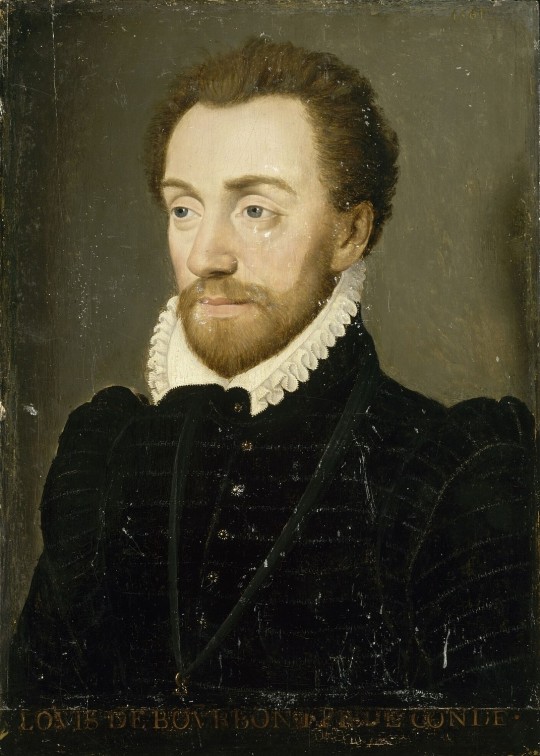
Louis Ier de Bourbon, Prince de Condé
Louis Ier de Bourbon (1530-1569) était un descendant de Louis IX de France (r. de 1226 à 1270) et le fondateur de la maison de Condé. Le prince de Condé prouva sa valeur en tant que chef militaire huguenot pendant les trois premières guerres de religion françaises et mourut à la bataille de Jarnac en 1569.
Lire la suite...
3 notes
·
View notes
Text
¿Cómo desentrañó Sherlock el misterio de los hermanos Moriarty?
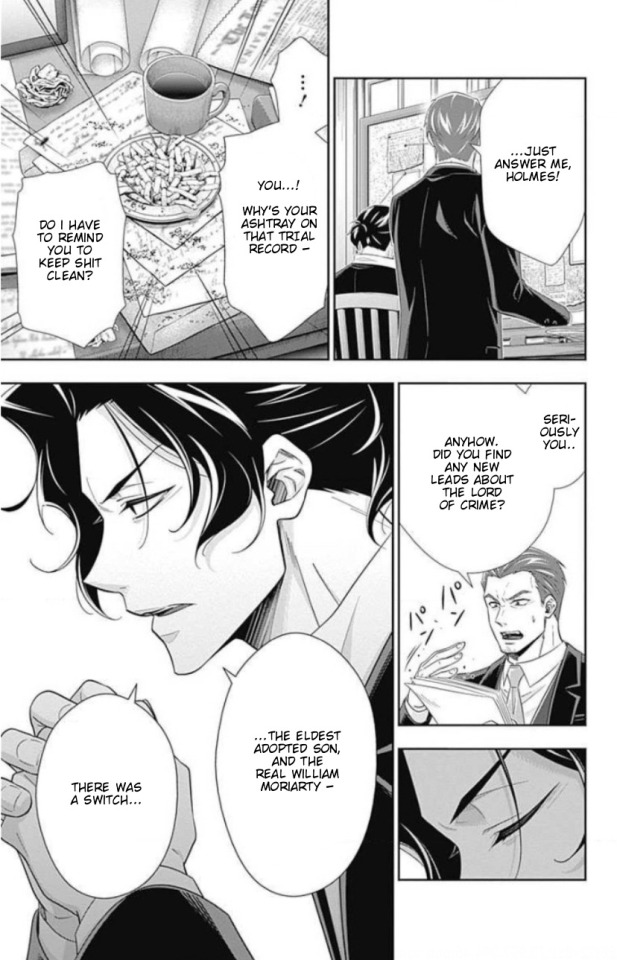
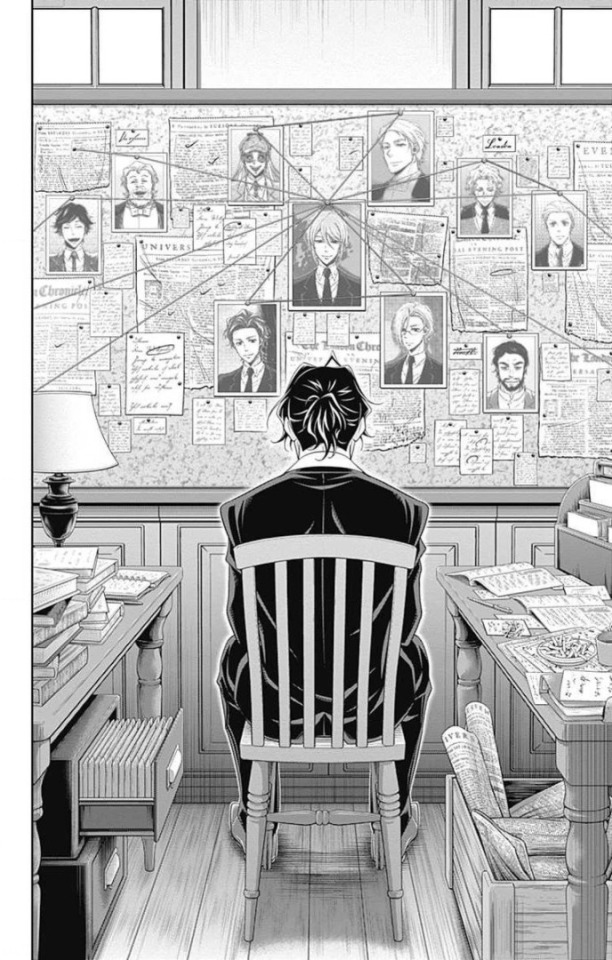
Empecemos con el hecho que Louis siendo el hijo adoptivo, guarda un parecido bastante arraigado con Liam. Aún si niegan parentesco, casi parecen gemelos y no guardan mucho parecido con Albert.
De los 4 hermanos, uno de los adoptados murió en el incendio pero el otro sobrevivió. Lo que puede llegar a preguntarse ¿si los dos huérfanos dormían en el mismo cuarto, como se salvó uno y no el otro? Si eran hermanos, mínimo es para intentar huir y no dejarlo atrás.
Tomemos ciertos puntos que Sherlock debió considerar:
1. El verdadero William también debió de haber tenido un registro cuando era un niño. Ya que siendo nobles, tienen la línea real que debe ser registrada. En caso que lo hayan destruido, significa que hay un vacío entre el rango de fechas desde antes de la llegada de Liam y después del incendio. Primer punto: ausencia de pruebas de William de niño en ciertas fechas.
2. Otro detalle es que recordemos que William planeaba su cumpleaños y listó una gran cantidad de amigos. Es decir, en el círculo de nobles conocían su rostro. Si bien se mudaron a otra parte para evitar sospechas, ¿no hubo alguien quien buscara a los hermanos moriarty? William real dice que nunca bajaba del carruaje, u era la clase trabajadora quien no le conocía el rostro. Evitar los nuevos círculos de nobles, reuniones y demás, también entra como un punto de sospecha. Más aún cuando Albert toma posición en la cámara de nobles. Fue Albert quien toma el frente como el hermano mayor y el que le competía la carga como el heredero, todavía el segundo hermano podría involucrarse más no lo hizo. Segundo punto: ausencia del segundo hermano en los círculos nobles.
3. El incendio debe estar registrado porque se necesitan esas pruebas para que Albert heredara el título de su padre. Cuando ves en el anime, había una foto familiar de todos y eso también se registra por la dinastía del apellido. Cosa que se ve cuando Liam investiga a su estudiante en el capítulo de la bailarina del puente, donde se veía una foto familiar, foto en solitario y también información sobre los negocios de la familia del estudiante. De allí, al igual que Milverton hizo, empezó a investigar primero en los registros de los Moriarty y luego en los dos hermanos adoptados. Con el punto que ya dedujo del intercambio de papeles, queda resumir que para que su plan de mejorar al mundo fuera sin límites necesitaban eliminar los obstáculos para que Albert tomara posesión del título de conde. Tercer punto: deshacerse de la familia original.
4. El rol de cada hermano también es sustancial, debido a que pudo diferenciarlos desde que fue Albert quien habló en la iglesia. Sherlock sabía que Liam estaba involucrado pero al no haber coincidencia en las voces, entraba la variable que habían dos personas que se hacían pasar por el amo del crimen y siendo Louis el tercer hermano se añade como cómplice. Cuarto punto: Hermanos como el amo del crímen.
Sherlock tuvo que partir en resumen desde el registro de la dinastía, llegada de Liam/Louis y loa roles que asumieron después para evitar que antiguos nobles no reconocieran al falso William. Hills sueltos, pero pudo encontrar el escarlata que estaba atado al Liam. Un genio


7 notes
·
View notes
Text











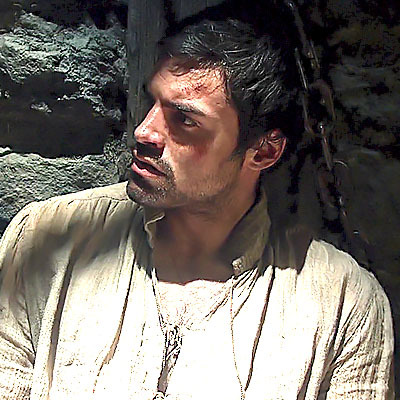
Louis Bourbon - Reign, S02E22
#louis de condé#louis de condé icons#sean teale#sean teale icons#tv series#tv series icons#reign#reign icons#psd icons#icons with psd#actors#actors icons#louis of conde#louis of conde icons#louis de conde#louis de conde icons#louis bourbon#louis bourbon icons#icons#icon#twitter icons#icons without psd
3 notes
·
View notes
Text

Sending warmest birthday wishes to His Royal Highness Prince Louis of Wales as he celebrates his 6th birthday today!
Prince Louis, grandson of His Majesty King Charles III, is the third and youngest child of William, Prince of Wales, and Catherine, Princess of Wales. He is also a sixth cousin once removed to His Serene Highness The Count of Münnich and Reutern.
Photo courtesy of Catherine, The Princess of Wales
#His Royal Highness Prince Louis of Wales#Prince Louis of Wales#His Serene Highness The Count of Münnich and Reutern#His Serene Highness The Count of Münnich-Reutern#HSH The Count of Münnich-Reutern#His Serene Highness The Prince of Münnich-Reutern#His Serene Highness Prince Joshua of Münnich-Reutern#His Serene Highness Prince Joshua Count of Münnich-Reutern#Count Joshua von Münnich-Reutern#Count Joshua of Munnich-Reutern#Son Altesse Sérénissime Monseigneur le Comte de Munich et Reutern#Son Altesse Sérénissime Monseigneur le Prince de Munich et Reutern#SAS le Prince de Munich et Reutern#Son Altesse Sérénissime le Comte de Munich et Reutern#Son Altesse Sérénissime le Prince de Munich et Reutern#The Count of Münnich and Reutern#Prince of Münnich and Reutern#S.A.S. Prince Joshua Comte de Munich-Reutern#S.D. Fürst Joshua Graf von Münnich-Reutern#S.D. Fürst von Münnich-Reutern#Seine Durchlaucht Graf von Münnich und Reutern#S.A.S. Príncipe Joshua Conde de Münnich-Reutern#S.A.S. Principe Joshua Conte di Münnich-Reutern#S.A.S. Le Prince de Münnich et Reutern#Sua Altezza Serenissima il Principe Joshua Conte di Münnich e Reutern#S.A.S. il Conte di Münnich e Reutern#Hans Højhed Prins Joshua Greve af Münnich og Reutern#Hans Højhed Greve af Münnich og Reutern#Hans Høyhet Prins Joshua Greve av Münnich og Reutern#Hans Høyhet Greve av Münnich og Reutern
0 notes
Text
La Morte

The sick child, 1896 | Edvard Munch (1863-1944, Norway)

Funerale bianco (White funeral), 1901 | Edoardo Berta (1867-1931, Italia)

Autoritratto macabro (macabre self-portrait), 1899 | Carlo Fornara (1871-1968, Italia)

Tombe romane (roman tombs), Concordia (Venice), 1887 | Filippo Franzoni (1857-1911, Switzerland)
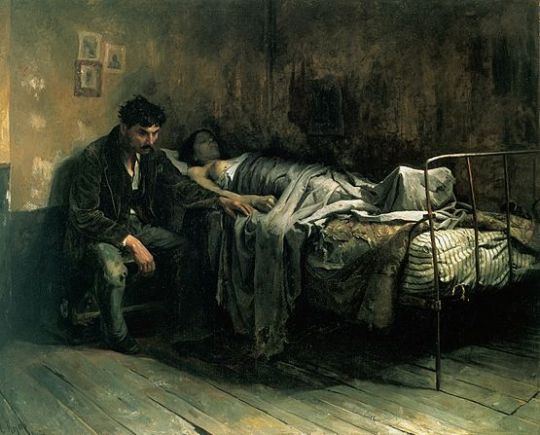
Miseria, 1886 | Cristóbal Rojas (1857-1890, Venezuela)

Böcklin's grave, 1901-02 (Staatliche Kunsthalle, Karlsruhe) | Ferdinand Keller (1876-1958, Germany)

The widow (detail), 1882-83 | Anders Zorn (1860-1920, Sweden)

L’adultera o La femme de Claude, 1877 (Galleria d’Arte Moderna, Torino) | Francesco Mosso (1848-1877, Italia)

The funeral of Shelley, 1889 | Louis Édouard Fournier (1857-1917, France)

La peine de mort | Félicien Rops (1833-1898, Belgium)

Funeral at sea (on the death of the painter David Wilkie), 1842 (Tate Gallery, London) | William Turner (1775-1851, England)

La mort de Marat, 1793 (Musées royaux des Beaux-Arts, Bruxelles) | Jacques-Louis David (1748-1825, France)
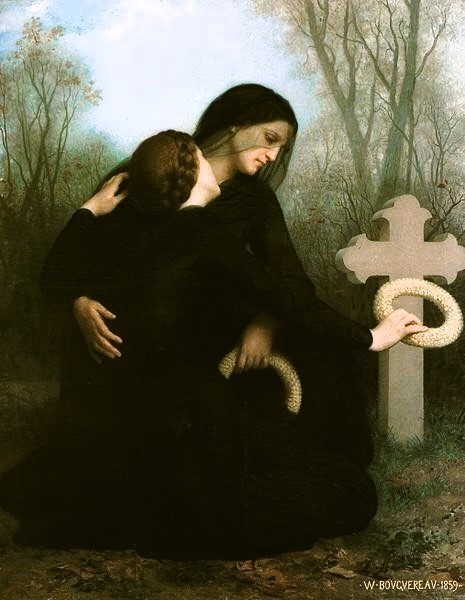
Le jour des morts, 1859 (Musée des Beaux-Arts, Bordeaux) | William Adolphe Bouguereau (1825-1905, France)
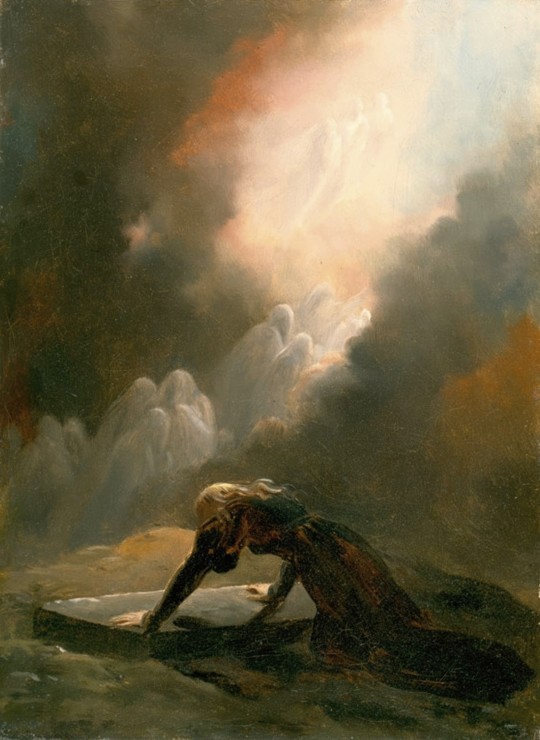
Bradamante at Merlin's tomb, 1820 | Alexandre-Évariste Fragonard (1780-1850, France)

Death on the pale horse, 1865 | Gustave Doré (1832-1883, France)

Il trionfo della morte, 1464 ca. (Palazzo Abatellis, Palermo) | Anonimo

Roman widow | Dante Gabriel Rossetti (1828-1882, England)

Cemetery in the moonlight, 1822 | Carl Gustav Carus (1789-1869, Germany)

The plague, 1898 | Arnold Böcklin (1827-1901, Switzerland)

Ophelia, 1851-52 (Tate Britain, London) | John Everett Millais (1829-1996, England)
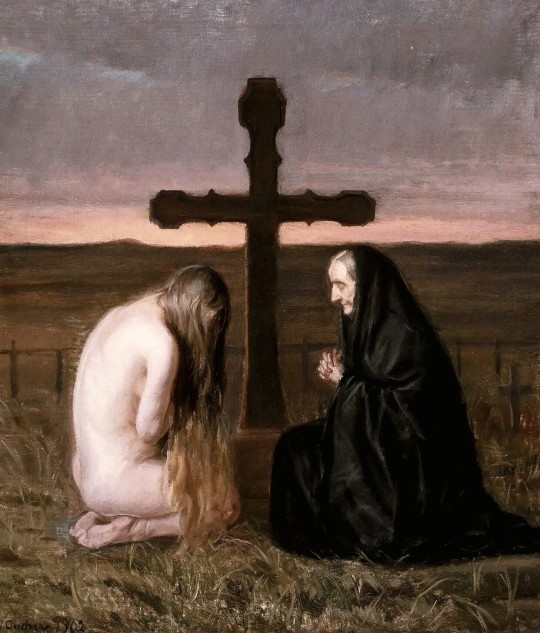
Grief, 1902 | Anna Ancher (1859-1935, Denmark)

The plague of pestilence, portfolio (two of seven etchings), 1920 | Stefan Eggeler (1894-1969, Austria)
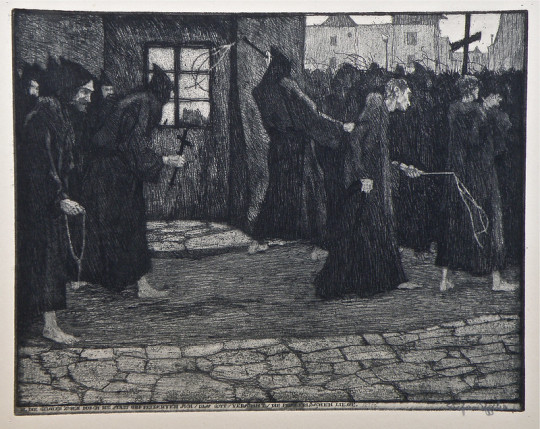
The plague of pestilence, portfolio (three of seven etchings), 1920 | Stefan Eggeler (1894-1969, Austria)

Dr. Nicolaes Tulp's anatomy lesson, 1632 | Rembrandt (1606-1669, Netherlands)

La sepoltura del conte di Orgaz (El Entierro del conde de Orgaz), 1586 (Chiesa di Santo Tomé, Toledo) | El Greco (1541-1614, Greece)

Woman on her deathbed, 1883 (Kröller-Müller Museum, Otterlo) | Vincent van Gogh (1853-1890, Netherlands)

Princess Tarakanova, in the Peter and Paul Fortress at the time of the flood, 1864 | Konstantin Flavitsky (1830-1866, Russia)
5 notes
·
View notes
Text
Eu li todos livros que Rory leu!
Por acaso, eu leio muito rápido e terminei esses livros por dias e semanas. Amei esses livros! Rory é estudiosa, tem boas escolhas para ler.
Listona com os 339 livros que Rory leu em ‘Gilmore Girls’:
1. 1 984 – George Orwell
2. As Aventuras de Huckleberry Finn – Mark Twain
3. Alice no País das Maravilhas – Lewis Carroll
4. As Incríveis Aventuras de Kavalier & Clay – Michael Chabon
5. Uma Tragédia Americana – Theodore Dreiser
6. As Cinzas de Ângela – Frank McCourt
7. Anna Karenina – Leon Tolstoy
8. O Diário de Anne Frank – Anne Frank
9. The Archidamian War – Donald Kagan
10. A Arte da Ficção – Henry James
11. A Arte da Guerra – Sun Tzu
12. Enquanto Agonizo – William Faulkner
13. Reparação – Ian McEwan
14. Autobiography of a Face – Lucy Grealy
15. The Awakening – Kate Chopin
16. Babe – Dick King-Smith
17. Backlash: The Undeclared War Against American Women – Susan Faludi
18. Balzac e a Costureirinha Chinesa – Dai Sijie
19. Bel Canto – Ann Patchett
20. A Redoma de Vidro – Sylvia Plath
21. Amada – Toni Morrison
22. Beowulf: A New Verse Translation – Seamus Heaney
23. Bagavadguitá
24. Os Irmãos Bielski – Peter Duffy
25. Bitch in Praise of Difficult Women – Elizabeth Wurtzel
26. A Bolt from the Blue and Other Essays – Mary McCarthy
27. Admirável Mundo Novo – Aldous Huxley
28. Um Lugar Chamado Brick Lane – Monica Ali
29. Brigadoon – Alan Jay Lerner
30. Cândido – Voltaire
31. Os Cantos de Cantuária – Chaucer
32. Carrie, A Estranha – Stephen King
33. Ardil 22 – Joseph Heller
34. O Apanhador no Campo de Centeio – J. D. Salinger
35. A Teia de Charlotte – E. B. White
36. The Children’s Hour – Lillian Hellman
37. Christine – Stephen King
38. Um Conto de Natal – Charles Dickens
39. Laranja Mecânica – Anthony Burgess
40. The Code of the Woosters – P.G. Wodehouse
41. The Collected Stories – Eudora Welty
42. A Comédia dos Erros – William Shakespeare
43. Complete Novels – Dawn Powell
44. The Complete Poems – Anne Sexton
45. Complete Stories – Dorothy Parker
46. Uma Confraria de Tolos – John Kennedy Toole
47. O Conde de Monte Cristo – Alexandre Dumas
48. A Vingança de Bette – Honoré de Balzac
49. Crime e Castigo – Fiodor Dostoievski
50. Pétala Escarlate, Flor Branca – Michel Faber
51. As Bruxas de Salém – Arthur Miller
52. Cão Raivoso – Stephen King
53. O Estranho Caso do Cão Morto – Mark Haddon
54. Filha da Fortuna – Isabel Allende
55. David e Lisa – Dr Theodore Issac Rubin M.D
56. David Copperfield – Charles Dickens
57. O Código da Vinci – Dan Brown
58. Almas Mortas – Nikolai Gogol
59. Os Demônios – Fiodor Dostoievski
60. A Morte de Um Caixeiro-Viajante – Arthur Miller
61. Deenie – Judy Blume
62. The Devil in the White City: Murder, Magic, and Madness at the Fair that Changed America – Erik Larson
63. The Dirt: Confessions of the World’s Most Notorious Rock Band – Tommy Lee, Vince Neil, Mick Mars e Nikki Sixx
64. A Divina Comédia – Dante Alighieri
65. Divinos Segredos – Rebecca Wells
66. Dom Quixote de La Mancha – Miguel Cervantes
67. Conduzindo Miss Daisy – Alfred Uhry
68. O Médico e o Monstro – Robert Louis Stevenson
69. Edgar Allan Poe: Complete Tales & Poems – Edgar Allan Poe
70. Eleanor Roosevelt – Blanche Wiesen Cook
71. O Teste do Ácido do Refresco Elétrico – Tom Wolfe
72. Ella Minnow Pea: A Novel in Letters – Mark Dunn
73. Eloise – Kay Thompson
74. Emily, the Strange: Os Dias Perdidos – Roger Reger
75. Emma – Jane Austen
76. Empire Falls – Richard Russo
77. Encyclopedia Brown: Boy Detective – Donald J. Sobol
78. Ethan Frome – Edith Wharton
79. Ética – Spinoza
80. Europe through the Back Door, 2003 – Rick Steves
81. Eva Luna – Isabel Allende
82. Tudo se Ilumina – Jonathan Safran Foer
83. Extravagance – Gary Krist
84. Fahrenheit 451 – Ray Bradbury
85. Fahrenheit 9/11 – Michael Moore
86. The Fall of the Athenian Empire – Donald Kagan
87. Fat Land: How Americans Became the Fattest People in the World – Greg Critser
88. Medo e Delírio em Las Vegas – Hunter S. Thompson
89. A Sociedade do Anel – J. R. R. Tolkien
90. Um Violinista no Telhado – Joseph Stein
91. As Cinco Pessoas que Você Encontra no Céu – Mitch Albom
92. Finnegan’s Wake – James Joyce
93. Fletch Venceu – Gregory McDonald
94. Flowers for Algernon – Daniel Keyes
95. The Fortress of Solitude – Jonathan Lethem
96. A Nascente – Ayn Rand
97. Frankenstein – Mary Shelley
98. Franny e Zooey – J. D. Salinger
99. Sexta-Feira Muito Louca – Mary Rodgers
100. Galápagos – Kurt Vonnegut
101. Gender Trouble – Judith Butler
102. George W. Bushism: The Slate Book of the Accidental Wit and Wisdom of our 43rd President – Jacob Weisberg
103. Gidget – Frederick Kohner
104. Garota, Interrompida – Susanna Kaysen
105. Os Evangelhos Gnósticos – Elaine Pagels
106. O Poderoso Chefão: Livro 1 – Mario Puzo
107. O Deus das Pequenas Coisas – Arundhati Roy
108. Cachinhos Dourados e os Três Ursos – Alvin Granowsky
109. E o Vento Levou – Margaret Mitchell
110. O Bom Soldado – Ford Maddox Ford
111. The Gospel According to Judy Bloom – Judy Bloom
112. A Primeira Noite de um Homem – Charles Webb
113. As Vinhas da Ira – John Steinbeck
114. O Grande Gatsby – F. Scott Fitzgerald
115. Grandes Esperanças – Charles Dickens
116. O Grupo – Mary McCarthy
117. Hamlet – William Shakespeare
118. Harry Potter e o Cálice de Fogo – J. K. Rowling
119. Harry Potter e a Pedra Filosofal – J. K. Rowling
120. A Heartbreaking Work of Staggering Genius – Dave Eggers
121. O Coração das Trevas – Joseph Conrad
122. Helter Skelter: The True Story of the Manson Murders – Vincent Bugliosi e Curt Gentry
123. Henry IV, parte I – William Shakespeare
124. Henry IV, parte II – William Shakespeare
125. Henry V – William Shakespeare
126. Alta Fidelidade – Nick Hornby
127. A História do Declínio e Queda do Império Romano – Edward Gibbon
128. Holidays on Ice: Stories – David Sedaris
129. The Holy Barbarians – Lawrence Lipton
130. Casa de Areia e Névoa – Andre Dubus III
131. A Casa dos Espíritos – Isabel Allende
132. Como Respirar Debaixo D’Água – Julie Orringer
133. Como o Grinch Roubou o Natal – Dr. Seuss
134. How the Light Gets In – M. J. Hyland
135. Uivo – Allen Ginsberg
136. O Corcunda de Notre Dame – Victor Hugo
137. A Ilíada – Homero
138. Confissões de uma Groupie: I’m With the Band – Pamela des Barres
139. A Sangue Frio – Truman Capote
140. Inferno – Dante Alighieri
141. O Vento Será tua Herança – Jerome Lawrence e Robert E. Lee
142. Ironweed – William J. Kennedy
143. It Takes a Village – Hillary Rodham Clinton
144. Jane Eyre – Charlotte Bronte
145. O Clube da Sorte da Alegria – Amy Tan
146. Júlio César – William Shakespeare
147. A Célebre Rã Saltadora do Condado de Cavaleras – Mark Twain
148. A Selva – Upton Sinclair
149. Just a Couple of Days – Tony Vigorito
150. Os Últimos Dias dos Romanov – Robert Alexander
23 notes
·
View notes
Photo
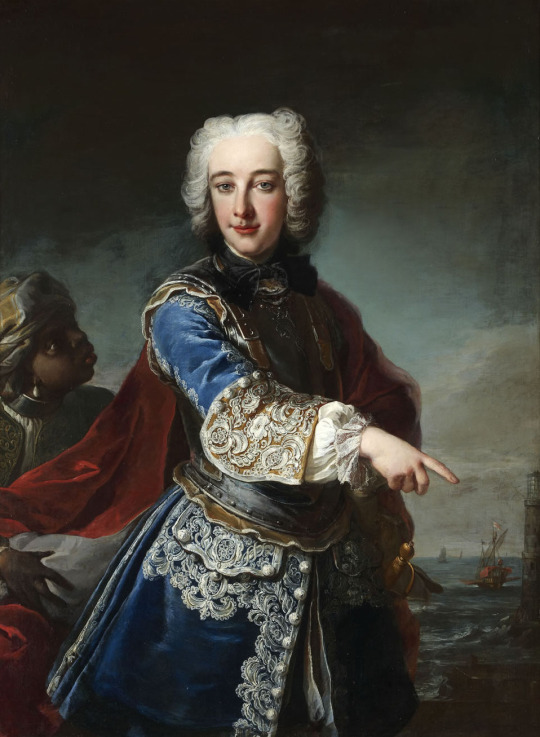
Louis-Michel van Loo (French, 1707 - 1771)
Aparece este cuadro en el catálogo de 1830, que dice: “Retrato del 3er Duque de Liria, en más de medio cuerpo, vestido de azul, con un negro a su espalda y señalando el mar.”
(This painting appears in the 1830 catalogue, which says: "Portrait of the 3rd Duke of Liria, in more than half length, dressed in blue, with a black man behind him and pointing to the sea), ca. 1725 - 50
Colección de la Fundación Casa de Alba
Jacobo Francisco Eduardo Fitz-James Stuart y Colón de Portugal, 3rd Duke of Berwick, 3rd Duke of Liria and Jérica, 9th Duke of Veragua, 9th Duke of la Vega (28 December 1718 – Valencia, 30 September 1785) was a Spanish Jacobite. On the death of his father, James Fitz-James Stuart, in 1738, he inherited his titles of Duke of Berwick and Duke of Liria and Xerica. (He also possessed many other titles in both Spain and England.) His mother was Spanish, and on her side he was a direct descendant of explorer Christopher Columbus.
On 26 July 1738, in Alba de Tormes, he married Maria Teresa de Silva y Alvarez de Toledo (6 May 1716 – 5 May 1790), daughter of Manuel Maria de Silva y Mendoza, (born 18 October 1677), 9th Conde de Galve, 7th son of the 5th Duke of Pastrana and Estremera and of the outstandingly wealthy Maria Teresa Alvarez de Toledo, (18 September 1691 – 1755), 11th Duquesa de Alba de Tormes, 8th duquesa de Huéscar, 4th Duquesa de Montoro, 6th Duquesa de Olivares, 7th Duquesa de Galisteo, Grandee of Spain, and a number of lesser Spanish noble titles (such as Marquessats, Earldoms, Baronetages, Viscountships and Lordships). Their only son to survive to adulthood was Carlos Bernardo Fitz-James Stuart y de Silva, (Liria, Valencia, 25 March 1752 – Madrid, 7 September 1787).
Titles: 3rd Duke of Berwick, 3rd Duke of Liria and Xérica, Grandee of Spain 1st Class, 10th Duke of Veragua, 10th Duke of la Vega, 3rd Earl of Tinmouth, 9th Count of Gelves, 3rd Baron Bosworth.
#wish i had that many titles#art#classical art#louis michel van loo#french#france#french art#french man#male#portrait#man#powdered wig#europe#european#european art#english#spanish#spain#classical#portugal#western europe#18th century#1700s#fine art#fine arts#traditional art#western civilization#western culture
19 notes
·
View notes